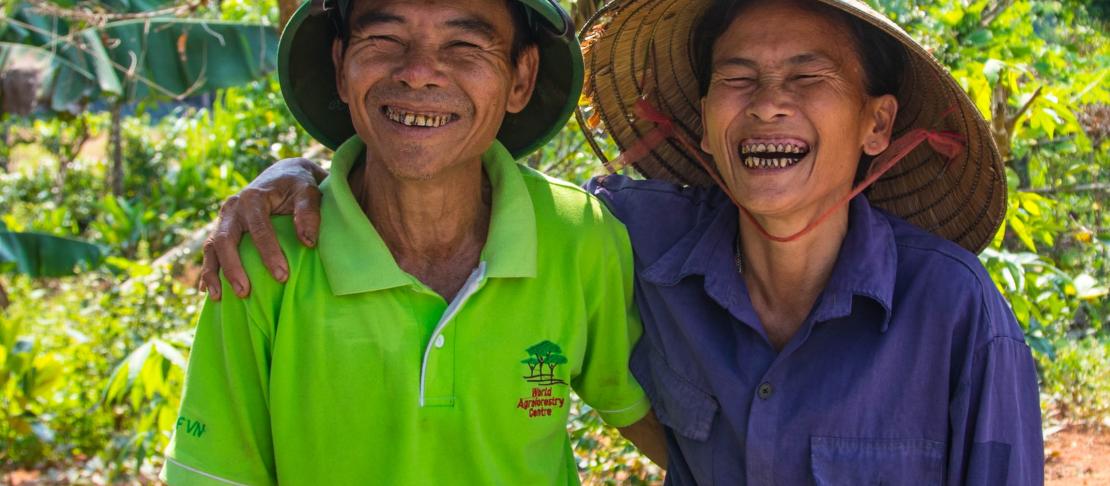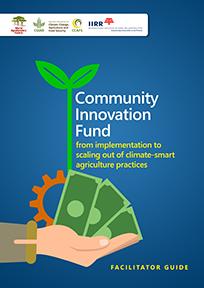Fund to jump-start implementation of climate-smart agriculture

Farmer interest groups who hope to implement climate-smart agriculture in their communities won't have to start from scratch with the help of this “kick-start fund”.
A Community Innovation Fund (CIF) refers to a loan allowing farmer interest groups to implement climate-smart agriculture (CSA) in their communities. The step-by-step process of facilitating CIF was detailed in a guide put together by the World Agroforestry Centre (ICRAF) Vietnam, with support from the CGIAR Research Program on Climate Change, Agriculture and Food Security (CCAFS) and the International Institute of Rural Reconstruction. The guide was based on their experiences in My Loi Climate-Smart Village (CSV), one of the three CSVs in Vietnam where CCAFS tests participatory CSA practices.
CIF implementation consists of three main phases: preparatory and group formation; training; and monitoring and supervision.
Understanding stakeholders; establishing structure
During phase 1, situation analysis and needs assessment is conducted to understand the characteristics of stakeholders, as well as the existing situations in their community. This is also when the feasibility of CIF in the target community is explored. Specifically, the stakeholders identify barriers for agricultural production, current CSA practices they use, and their financial capabilities. After understanding the target community, roles and responsibilities are defined for the farmers who will join the CIF implementation. Regulations are also set for managing the CIF.
 Download the Facilitator Guide: Community Innovation Fund from implementation to scaling out of climate-smart agriculture practices |
Capacity building
The next phase equips the farmers and other participants with the necessary skills to implement the CIF and the appropriate knowledge to educate them about CSA and CSA indicators. This involves trainings on paperwork, fund management, and CSA practices, which are conducted both indoors and in the field. These trainings allow farmers to sustainably manage the CIF even without external interventions. During these trainings, the participants ensure that the CIF will be dedicated to CSA implementation only.
CIF implementation
The last phase is the actual CIF implementation at the village level. CIF participants are handed funds that are expected to be spent in implementing CSA practices. They must also decide on a force majeure plan in case an unexpected incident or disaster prevents them from fulfilling their obligations. The CIF, as well as the progress of CSA practices implemented, are monitored by a facilitator through group record books, field trips, and field notes from the staff on the ground.
Sustainable, community-based, participatory
The CIF is designed to fit the needs of the stakeholders for them to implement CSA practices in their communities. Because the stakeholders are trained to manage the funds loaned to them on their own, they feel a sense of ownership and responsibility, ensuring that the CIF is spent on CSA implementation only. This is beneficial for both CSA adopters and advocates. The adopters are given financial resources to try practices that will help them adapt to and mitigate the impacts of climate change. For advocates, this is an opportunity to further promote CSA and see its effectiveness on the ground.
Download the publication: Le TT, Simelton E, Le HV. 2018. Community Innovation Fund from implementation to scaling out of climate-smart agriculture practices. Wageningen, The Netherlands: CGIAR Research Program on Climate Change, Agriculture and Food Security (CCAFS).
Read More:
- Blog: Affordable new high-tech insurance product helps increase farmers’ resilience to climate change impacts
- News Update: Do farmers want to pay for climate services?
- News Update: Scalable climate-smart agriculture technologies and practices that communities can adopt
Renz Louie Celeridad is the Junior Communications Specialist for the World Agroforestry Centre Philippines. He also works as a Communications Consultant for CCAFS SEA.



